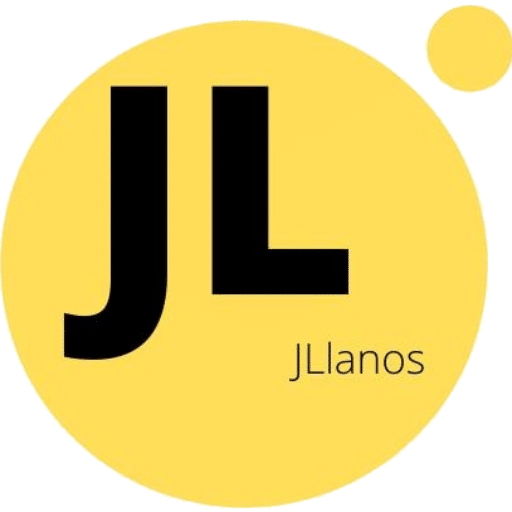In the digital era in which we live, the URL has become a fundamental element for the functioning of the Internet.
Despite being an everyday tool, many people are still unaware of its significance and importance in the online world.
In this article, we will discuss the definition of URLs, their structure and components, the different types of URLs and how to optimize them to improve SEO.
In addition, we will discuss some common mistakes when creating URLs and how to avoid them, as well as the new trends and technologies that are emerging around this key web tool.
URL definition
The URL (Uniform Resource Locator) is a string of characters used to identify and locate resources on the web, such as web pages, images, videos, among others.
It is a unique address that allows access to a specific resource on the Internet.
The URL consists of several components, such as the communication protocol (http or https), the domain name (e.g. google.
com), the resource path and additional parameters.
The URL structure is fundamental to the functioning of the World Wide Web, as it allows users to access resources available online from anywhere in the world.
In addition, URLs are important for search engine optimization (SEO), as they help search engines index and rank websites.
It is important to emphasize that URLs should be clear and descriptive so that users can easily understand the content they are accessing.
In summary, the URL is a key element in Internet navigation and website creation and management, as it allows users to access specific resources and helps search engines to rank the content available online.
The importance of URLs in the digital era
In the digital age, URLs are essential for any website.
A URL is the unique identifier of a web page, and is what allows users to access it through a browser.
URLs are also important for search engines, as they allow them to index and rank web pages based on their content and relevance.
In addition, a clear and descriptive URL can improve the user's experience by telling them what to expect from the page before they click on the link.
URLs are also important from a digital marketing point of view.
An optimized URL can improve the SEO (Search Engine Optimization) of a website, which means that it will be easier for users to find it in search results.
To do this, it is important to include relevant keywords in the URL and avoid using special characters or random numbers.
It is also important to keep URLs short and clean to facilitate memorization and sharing on social networks.
In summary, URLs are a fundamental part of web operation and their importance should not be underestimated.
From improving user experience to increasing search engine visibility, a good URL strategy can make the difference between a successful website and one that goes unnoticed.
Structure of a URL: components and functions
The structure of a URL is fundamental to understanding how websites work.
A URL (Uniform Resource Locator) is the address that identifies a web page on the Internet.
The structure of a URL consists of several parts, each with a specific function.
The first part is the protocol, which indicates the type of connection that will be used to access the web page (HTTP or HTTPS).
Next, you will find the domain, which is the name of the website you want to access.
After the domain, the path appears, which indicates the specific location of the page within the website.
The path can include subdirectories and individual files.
Finally, there are the optional parameters, which are used to provide additional information about the page request.
These parameters can be used to customize the page content or to perform specific searches.
It is important to note that the structure of a URL is not only important for end users, but also for search engines.
Search engines use the information contained in the URLs to index and rank the web pages.
Therefore, it is essential that URLs are clear and descriptive, with keywords relevant to the content of the page.
In summary, understanding the structure of a URL is essential for navigating the Internet and optimizing the SEO of a website.
Types of URLs: examples and differences
There are several types of URLs, each with its own function and characteristics.
One of the most common is HTTP, which stands for "Hypertext Transfer Protocol".
This type of URL is used to access websites via the HTTP or HTTPS (secure) protocol.
Another variant is FTP, which stands for "File Transfer Protocol", which is used to transfer files over the Internet.
There are also relative URLs, which are used to refer to resources within the same website.
These URLs are shorter and easier to read and write, but are not suitable for sharing outside the website.
Absolute URLs, on the other hand, are complete addresses that include the domain name and the full path. to the appeal.
These URLs are longer and less readable, but can be easily shared across different platforms and websites.
In addition, there are canonical URLs, which are used to avoid duplicate content on different pages of a website.
These URLs point to the main page of the content to avoid confusion in search engines.
It is important to choose the right type of URL for each situation and ensure that they are clear, concise and easy to understand for both users and search engines.
How to optimize your URLs to improve SEO
URL optimization is a key factor in improving a website's SEO.
To this end, it is important to take into account some fundamental aspects.
First of all, it is necessary to include relevant keywords in the URL, as this will make it easier for search engines to identify the content of the page and associate it with the searches performed by users.
In addition, it is recommended to use a logical and coherent structure in the creation of URLs, avoiding the use of special characters or unnecessary numbers that may make them difficult to understand.
It is also important to avoid duplicate URLs, as this can lead to duplicate content problems and negatively affect search engine rankings.
Another relevant aspect is the inclusion of the URL in the sitemap, which will facilitate its indexation by search engines and improve the visibility of the website.
It is also recommended to use friendly and readable URLs for users, as this will help improve their browsing experience and increase the likelihood that they will share the content on their social networks or websites.
Finally, it is important to constantly monitor the URLs of the website and update them in case of changes in the structure or content of the site.
In short, URL optimization is a fundamental factor to improve the SEO of a website and increase its visibility in search engines.
Common mistakes when creating URLs and how to avoid them
One of the most common mistakes when creating URLs is not using relevant keywords in the URL structure.
This can have a negative impact on SEO and make the page less relevant to search engines.
Another common mistake is to use special characters or blank spaces in URLs, which can lead to technical and compatibility problems with some browsers and devices.
It is also important to avoid duplicating URLs, as this can confuse search engines and negatively affect page ranking.
To avoid these errors, it is advisable to use relevant keywords in the URL structure, keep the URL short and clear, avoid using special characters and whitespace, and make sure that each URL is unique and descriptive of the page content.
In addition, tools such as Google Search Console can be used to identify URL errors and correct them quickly.
In short, a well-structured and optimized URL can significantly improve SEO and user experience, so it is important to pay attention to this fundamental aspect of web design.
The future of URLs: new trends and technologies
The future of URLs is constantly evolving, adapting to new trends and technologies emerging in the digital era.
One of the main changes that are taking place is the use of shorter and more user-friendly URLs, which improves the user experience and makes it easier to memorize the web address.
In addition, new technologies are being implemented, such as HTTP/2 and QUIC protocols, which allow higher loading speed and security in data transmission.
Another important aspect is the incorporation of blockchain-based URLs, which guarantees their immutability and increases trust in online transactions.
On the other hand, dynamic URLs are also being developed that change according to the context and the user using them, thus improving the personalization of web browsing.
In terms of SEO, URLs are expected to become more and more relevant for search engine positioning, so special attention should be paid to their structure and content.
In short, the future of URLs points towards greater personalization, security and efficiency in web browsing, adapting to the needs of users and the demands of the digital market.
In short, the URL is a fundamental piece in the digital world.
Its correct structuring and optimization can make the difference in terms of web positioning and user experience.
Moreover, its evolution and adaptation to new technologies promises to remain a relevant topic in the future.
In this sense, it is interesting to reflect on how the irruption of artificial intelligence or virtual reality could transform the way we conceive URLs and how we interact with them.
Undoubtedly, this is a constantly evolving field that invites us to be attentive to new trends and possibilities that arise on the digital horizon.




